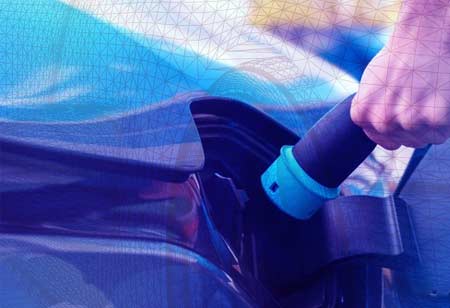THANK YOU FOR SUBSCRIBING
THANK YOU FOR SUBSCRIBING
Be first to read the latest tech news, Industry Leader's Insights, and CIO interviews of medium and large enterprises exclusively from Auto Tech Outlook

By
Auto Tech Outlook | Friday, December 23, 2022
Stay ahead of the industry with exclusive feature stories on the top companies, expert insights and the latest news delivered straight to your inbox. Subscribe today.
Consumers demand safety, convenience, and environmentally friendly personal mobility over shared and public transportation. The auto industry needs to reinvent itself to meet those needs.
FREMONT, CA: Globally, the future looks promising for the automobile industry in terms of growth. During the economic lull, automakers took advantage of it to reinvent themselves by adopting digital transformation in line with consumer preferences for safety, convenience, and environmental friendliness.
Let us understand the new trends in the automotive industry.
Increase in electric vehicles (EVs): Future generations will see EVs gradually replace fossil fuel-driven vehicles. The factors driving EV growth are,EVs are becoming more affordable than traditional combustion engine vehicles, reducing the cost of batteries, increasing fuel prices, and low ownership cost of zero-emission vehicles.
Online purchasing: Digitalization has made it easier for consumers to get almost anything delivered to their door. Automakers are also accepting this trend. Car buying has become entirely digital, from virtual test drives and completing all the required paperwork online to delivering the vehicle to the customer's doorstep. Automobile dealerships use hybrid models in which some aspects, like paperwork and test drives, are done online, but the vehicle is collected at the dealership.
Connected vehicles: Connected vehicle services and features are increasing as 4G and IoT grow. With connected mobility, these vehicles can communicate bi-directionally with various external systems to send digital data. Vehicle health reports and remote diagnostics help prevent breakdowns and avert accidents through turn-by-turn directions, warnings, and direct intervention.
It can be difficult to foresee the actions of other drivers around you, even for a safe driver. Connected cars can communicate between vehicles, preventing accidents on the road without your input. A connected car shares data like location, speed, and direction, exchanges messages, and deploys safety alerts.
Self-driving tech: Sensors, like radar, sonar, and lidar, along with odometry measurements, are used for self-driving cars. According to TWI Global, autonomous cars use self-driving tech and have six levels of automation. A higher level means more advanced automation. A level 2 vehicle, for instance, has automated braking and acceleration, but the driver is still required to perform most tasks. With level 5, the vehicle performs all driving tasks without human intervention. The auto industry is steadily embracing self-driving technology. Automakers, startups, and tech companies are working on self-driving technology.
Use of blockchain in vehicles: Auto companies use blockchain technology to share data. The process enables services like urban transport, ridesharing, and deliveries. According to industry experts, blockchain can also verify supply chains and support autonomous vehicles. Self-driving cars could get better traffic data with a blockchain ledger. Blockchain technology could simplify many driving-related payment tasks.
 Copyright © 2025 AutoTech Outlook. All Rights Reserved | Privacy Policy | Subscribe | Sitemap | About us | Feedback Policy | Editorial Policy
Copyright © 2025 AutoTech Outlook. All Rights Reserved | Privacy Policy | Subscribe | Sitemap | About us | Feedback Policy | Editorial Policy 



